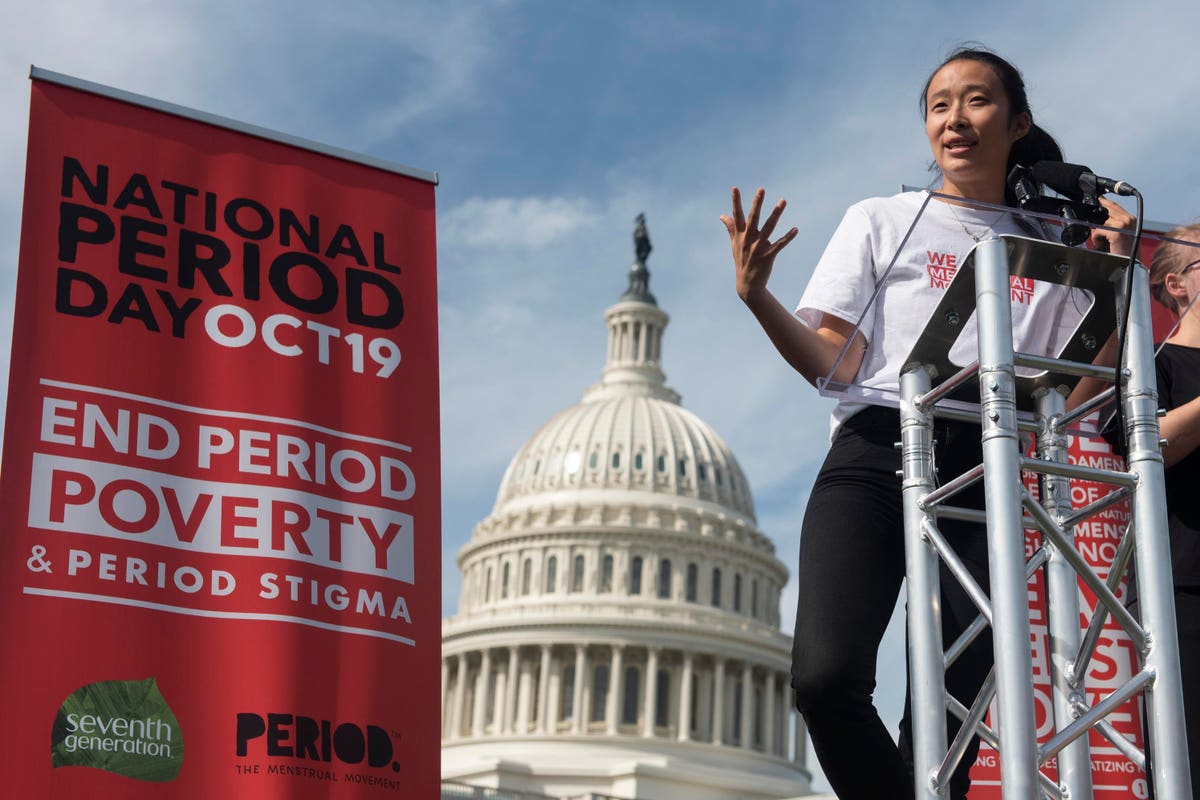College kids are notoriously strapped for cash, between tuition and living expenses without much income. New research shows that for many female college students, these financial pressures extend to the most essential and intimate day-to-day needs: period products.
According to a new nationwide survey released this month from intimate health brand INTIMINA, 20% of female college students said they are not familiar with the term “period poverty” though nearly as many have experienced it. One in five (19%) female college students reported that they’ve felt forced to decide between buying period products and paying for other expenses, such as food or other bills.
Nearly half (48%) of those surveyed said they have struggled to access menstrual products due to costs or other barriers.
The survey included respondents from five schools: Ohio State University, University of Wisconsin at Madison, Harvard University, New York University, and University of Central Florida. A majority (58%) reported working or receiving grants to help cover the cost of living during school. Fourteen percent of respondents reported both receiving financial aid and experiencing period poverty.
College students are often price sensitive, and that tendency holds true for these products as well. Cost was the second most important factor survey respondents cited in their choice of menstrual products. More than one-quarter (27%) said cost was the most important factor when purchasing menstrual products, second only to comfort and fit (59%).
“The financial security of college students is notoriously subpar,” said Emma Carter, a first year student at Barnard College in New York City. “Colleges have accounted for this by providing standardized meal plans across grade levels, and housing accommodations built into tuition bills. The issue of accessible period products is often overlooked, but pretending menstrual products are not necessary does not actually make them disposable.”
The financial burdens caused by the cost of period products have become increasingly well documented. INTIMINA’s survey results echo other data that show 14% of menstruating college students had experienced period poverty in the past year and 10% experience it every month. Additional data suggest that one in five teenagers have struggled to afford period products or haven’t been able to buy them at all and four out of five have missed class time or know someone who has due to lack of access to period products.
Misusing period products, such as by wearing pads or tampons for longer than recommended or reusing products that are meant to be disposable can cause health risks such as toxic shock or urinary tract infections, according to Dr. Alyssa Dweck, OBGYN and INTIMINA Medical Advisory Board Member.
But the costs to women can extend beyond physical harm.
“Period poverty has physical, social, and emotional ramifications,” Dweck said. “Many suffer with social isolation, depression, withdrawal, and shame. Some cannot or will not participate in daily activities, such as going to work or school due to lack of access to affordable menstrual hygiene products.”
Though anyone who menstruates can experience financial burdens and barriers, Dweck said that young women may be especially vulnerable to period poverty, not just because of financial realities but due to cultural norms and social pressures.
“Young people often suffer from stigmas and embarrassment, especially as it relates to intimate and sexual health and well-being,” she said. “They may be less likely to seek help from parents or caregivers as it relates to menstruation, and thus not get the proper resources and support they need.”
Dweck said that a lack of general awareness among young people may lead to lack of understanding about menstrual hygiene or available resources or programs that could help them access free or low-cost menstrual products.
Carter said that she believes her own school, an all-women’s college, has put conscious thought into making period products more accessible to students. Still, she said she thinks that they can do more to make period products more easily and widely accessible.
“Students resort to purchasing pink-taxed period products, diminishing their spending money on a monthly basis,” Carter said.
Dweck said that educators and educational institutions can take steps to support students and reduce period poverty. For example, universities can make pads and tampons available for free in all public restrooms or offer reusable, sustainable menstrual products accessible. These, Dweck said, can be an important way to overcome period poverty by reducing recurring monthly costs.
Across the country, several states and localities have passed laws to improve period equity. These efforts range from requiring public school districts to provide education and free products to removing sales tax on menstrual products.
At the federal level, proposed legislation in the Menstrual Equity for All Act would require that all public federal buildings and correctional facilities provide free period products, require Medicaid to cover period products, require employers of a certain size to provide free products, and provide incentives to higher education institutions to provide free menstrual products.
While waiting for the federal government to take action, there are steps anyone can take to advocate for period equity. Girls Inc., an advocacy organization for girls, recommends contacting your elected representatives to encourage them to support the federal legislation and approaching local officials to find out what is or could be happening in your city or town.
Read the full article here





